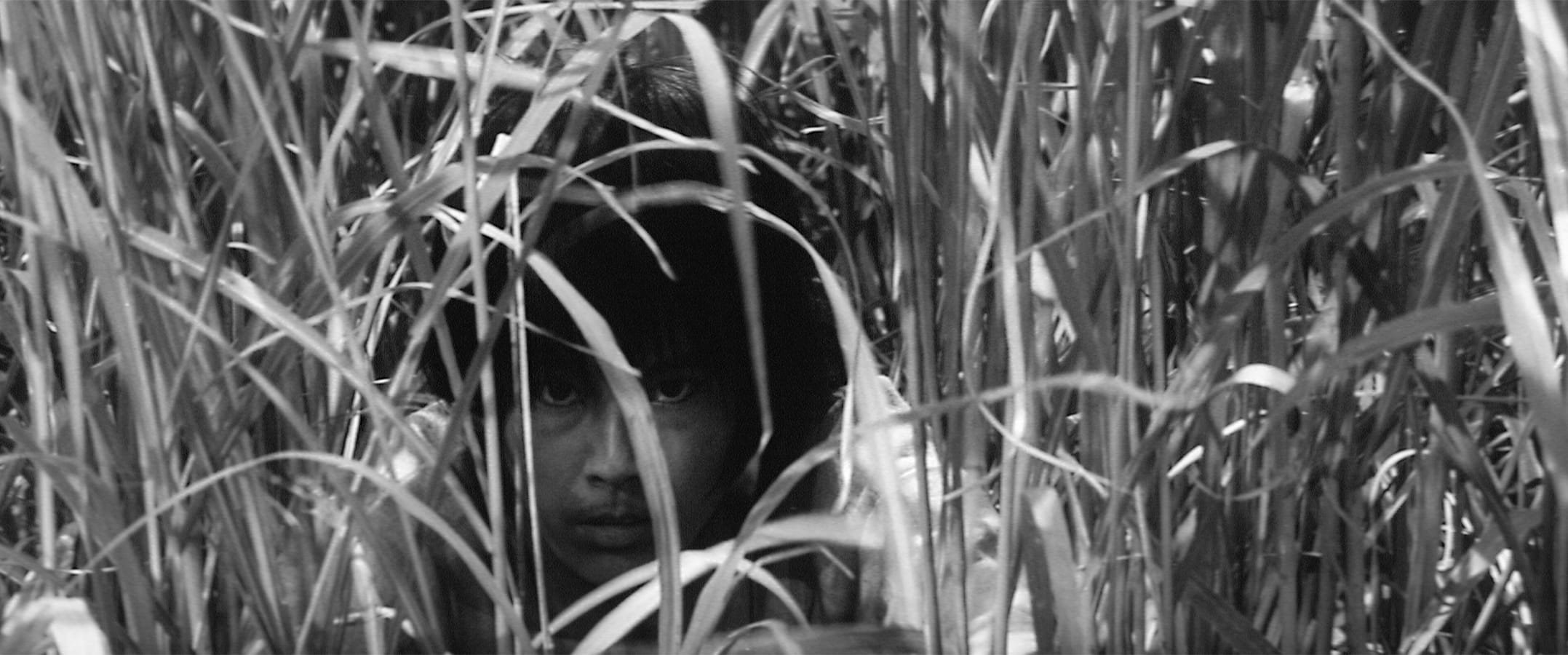Directed by Kaneto Shindō
I'm not a demon! I'm a human being!
As summer gave way to autumn here in Northern New Mexico, I began taking long walks upon the mesa where I live. There are many varieties of grasses that grow here, and I often stopped to admire their golden color in the low afternoon sunlight. As the season progressed, I began collecting grass seed to bring back to my yard in hopes of a future moment when I might look out my window to watch the blades of grass swaying in the wind.
It’s this swaying of blades of grass filmed in black and white and accompanied by a wild roiling mid-century jazz track that set the stage in the opening sequence of Onibaba. The entire film is set in a thick claustrophobic prairie of susuki grass which is much like pampas grass and grows to an average height of seven feet. The characters live in grass huts surrounded by grass that cuts off the view of everything outside of the grass. The environment dominates and it is beautiful and unrelenting at the same time.
It reminds me of another great Japanese film that also came out in 1964; Woman in the Dunes directed by Hiroshi Teshigahara. In this film the environment, sand rather than grass, also provides a constantly shifting setting. Both are endless and serve as an illustration of the temporality of human existence – they were there before and will be there after this messy human drama unfolds and will cover over everything. This existential dread is the beating heart of each film and is certainly something that I think about often as I make a home for myself in the wilderness.
